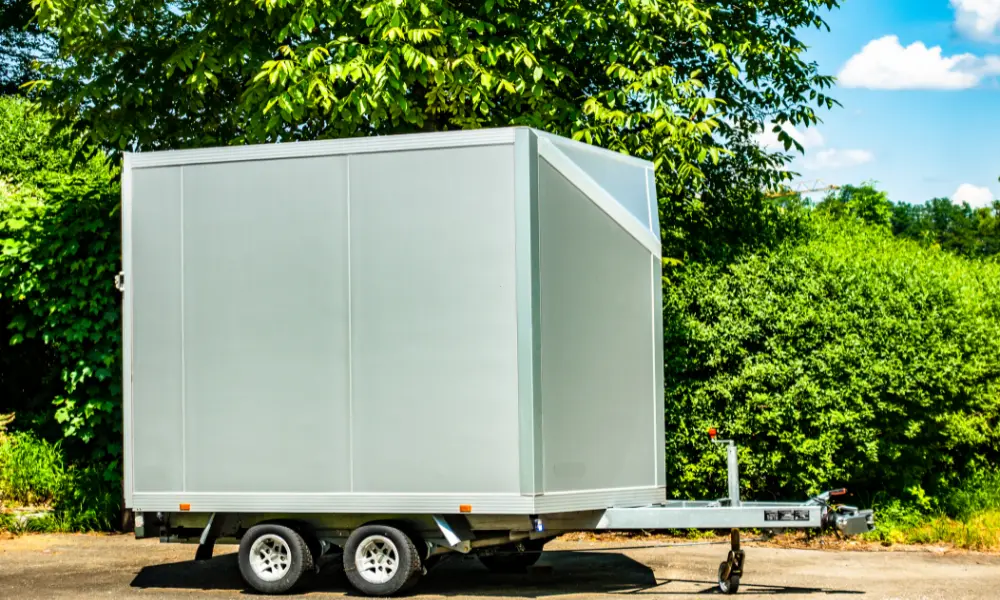Getting your car inspected in Maine doesn’t have to be confusing. Despite recent attempts to change the rules, annual inspections are still required for most vehicles. Here’s what you need to know to stay compliant and keep your car legal on Maine roads.
What Are Maine’s Current Vehicle Inspection Laws?
Maine requires annual safety inspections for all motor vehicles that need registration in the state. This law operates under Title 29-A, Section 1751 of Maine statutes and has been protecting drivers since the 1930s.
The Maine State Police Motor Vehicle Inspection Unit oversees the entire program. They manage over 2,600 licensed inspection stations and 8,000 certified technicians across the state. Every year, these stations inspect more than 1.3 million vehicles.
Who Needs an Inspection?
Almost every registered vehicle in Maine needs an annual inspection. The only exceptions are specific commercial vehicles and trailers that follow different rules. If you drive it on Maine roads and it’s registered here, you’ll need that annual sticker.
Understanding Maine’s Vehicle Classification System
Maine divides vehicles into five inspection classes, each with different requirements and costs:
Class A: Most Passenger Vehicles
This covers cars, light trucks, and SUVs weighing 10,000 pounds or less. Most Maine drivers fall into this category. These stations can also inspect heavier vehicles (10,001-26,000 pounds) if they have non-air brakes and physically fit in the inspection bay.
Class B: School Buses Only
School buses get special treatment with comprehensive safety checks. Inspectors examine stop arms, warning lights, and all passenger safety systems that keep kids safe.
Class C: Motorcycles and Three-Wheelers
Motorcycles, three-wheeled vehicles, and autocycles need specialized inspections. Technicians check motorcycle-specific items like handlebar height, footrests, and parking brakes.
Class D: Commercial Vehicles
Heavy commercial vehicles, those used in commerce between 10,001-26,000 pounds, and vehicles carrying hazardous materials or more than 15 passengers need Class D inspections.
Class E: Enhanced Cumberland County Inspections
If you live in Cumberland County, you’ll need enhanced inspections that include emissions testing beyond standard safety checks.
Cumberland County’s Special Requirements
Cumberland County residents face extra requirements because of air quality concerns. Your inspection depends on your vehicle’s age:
- Pre-1974 vehicles: Get Class E stickers but skip the enhanced testing
- 1974-1995 vehicles: Need gas cap pressure tests
- 1996 and newer: Require both gas cap tests and on-board diagnostic (OBD) system testing
These enhanced tests help Cumberland County meet federal air quality standards. Eliminating them could cost Maine federal funding, which explains why they’re sticking around.
What Gets Inspected During Your Visit?
Maine’s Class A inspections check at least 22 different categories. It’s one of the most thorough safety examinations in the country. Here’s what technicians examine:
Braking System
Your brakes get the most attention because they’re critical for safety. Inspectors check:
- Service and emergency brakes
- Brake pedal reserve
- Hydraulic systems and hoses
- Brake pad and rotor thickness
- Fluid levels and leak detection
Lighting and Electrical Systems
Every light on your vehicle gets tested:
- Headlight function and aiming
- Taillights and brake lights
- Turn signals and hazard lights
- License plate illumination
- Airbag diagnostic lights (for newer vehicles)
Steering and Suspension
Inspectors examine the components that keep you in control:
- Steering wheel free play
- Steering column security
- Ball joints and tie rods
- Shock absorbers and springs
- Wheel bearings
Tires and Wheels
Your tires need to meet specific standards:
- Minimum 2/32 inch tread depth
- No sidewall damage or weather cracking
- Proper tire pressure
- Matching tire types on each axle
- Appropriate load ratings
Frame and Body Integrity Standards
Maine’s harsh winters and road salt create unique challenges for vehicle bodies. Inspectors look for:
- Rust holes in unibody construction
- Rocker panel deterioration that lets fumes into the cabin
- Frame damage affecting safety
- Repairs meeting ICAR standards
This focus on structural integrity makes sense in a state where salt eats cars for breakfast.
What Happened to Those Bills Trying to End Inspections?
The 2025 legislative session saw three major attempts to change Maine vehicle inspection requirements. All three failed, showing strong political support for keeping the current system.
LD 320: The Complete Elimination Bill
Representative Ann Fredericks sponsored LD 320, which would have eliminated inspections for most passenger vehicles. Supporters argued that modern cars are safer and only 3% of Maine accidents between 2015-2019 involved mechanical issues.
The Transportation Committee crushed this bill with a 12-1 vote against it. Both legislative chambers accepted the “Ought Not to Pass” recommendation on May 14, 2025.
LD 1010: The Biennial Inspection Proposal
Representative Chad Perkins introduced LD 1010 with bipartisan support, including Democratic Senator Craig Hickman. This bill proposed switching from annual to every-other-year inspections.
The Maine Municipal Association and Maine Automobile Dealers Association both opposed the change. They argued that Maine’s harsh conditions require annual checks. The bill failed on June 2, 2025, when both chambers unanimously accepted the committee’s negative recommendation.
LD 661: New Vehicle Exemption
Representative Amy Roeder’s LD 661 would have exempted new vehicles from inspections for their first three years. This bill died on May 20, 2025, after getting an “Ought Not to Pass” recommendation.
How Much Do Inspections Cost?
Maine keeps inspection fees reasonable compared to other states with similar programs:
| Vehicle Type | Maximum Fee |
|---|---|
| Class A (most cars) | $12.50 |
| School buses | $8.00 |
| Motorcycles | $12.50 |
| Cumberland County (pre-1974) | $12.50 |
| Cumberland County (1974-1995) | $15.50 |
| Cumberland County (1996+) | $18.50 |
These fees make Maine one of the most affordable states for vehicle inspections. The program generates about $16-20 million annually across all inspections statewide.
How Maine Compares to Other States
Maine belongs to a shrinking group of states requiring annual vehicle safety inspections. Only 15 states still require annual inspections, with five more requiring biennial checks.
Recent trends show states moving away from inspection programs:
- New Hampshire eliminated inspections starting January 2026
- Texas ended most safety inspections in January 2025
- States without regular inspections include Florida, Michigan, Montana, and many others
However, Maine’s unique conditions justify keeping inspections. The state’s harsh winters, heavy road salt use, and variable road conditions create vehicle stress patterns not seen in warmer climates.
Finding an Inspection Station
Maine has over 2,600 licensed inspection stations, so finding one isn’t hard. You can choose any licensed facility regardless of location. The Maine State Police website helps you locate nearby stations.
Look for stations that display:
- Their inspection license
- Technician certifications
- Hourly labor rates
- Inspection procedure charts
This transparency helps you understand what you’re paying for before committing to service.
When to Get Your Inspection
Maine law requires annual inspections but doesn’t tie them to registration dates. You can get inspected anytime, and some people prefer getting it done early to avoid last-minute rushes.
If your vehicle fails inspection, you get 20 days to fix the problems and return for re-inspection. The station must give you a written list of what needs fixing.
Your Rights as a Consumer
Maine law protects vehicle owners during inspections:
- Stations can’t require unnecessary parts or excessive labor
- Only certified technicians can perform inspections
- You can file complaints online or call 207-624-8935
- Stations must secure inspection stickers under lock and key
If you disagree with an inspection result, you can contact the Maine State Police Traffic Division Inspection Unit to file a complaint.
What’s Next for Maine Inspections?
The decisive rejection of 2025 reform proposals suggests Maine’s inspection requirements have strong political support. Future changes will likely depend on:
- Safety evidence from states eliminating programs
- Technological advances in vehicle diagnostics
- Economic impact studies
- Federal environmental requirements
The Maine State Police have explored electronic inspection systems that could streamline record-keeping and improve oversight. However, these systems face resistance due to implementation costs and potential fee increases.
Tips for Passing Your Inspection
Want to avoid inspection headaches? Here’s how to prepare:
Before You Go
- Check all lights (headlights, taillights, turn signals)
- Test your horn and windshield wipers
- Inspect tires for adequate tread and proper inflation
- Make sure your registration and insurance are current
- Fix any obvious problems like cracked windshields
During Winter Months
- Clean salt buildup from brake lines and suspension components
- Check that road salt hasn’t damaged wiring or exhaust components
- Ensure battery terminals are clean and secure
- Verify that heating and defrosting systems work properly
For Cumberland County Residents
- Make sure your gas cap seals properly
- Address any check engine lights before inspection
- Keep emissions system components in good working order
Common Inspection Failures and How to Avoid Them
Understanding why vehicles fail inspections helps you prepare better:
Lighting Issues
Failed bulbs are common, especially during winter when electrical systems work harder. Replace any burned-out bulbs before your inspection.
Brake Problems
Worn brake pads, low fluid levels, or spongy pedals will fail inspection. Have brake issues addressed immediately for safety reasons.
Tire Problems
Insufficient tread depth, uneven wear patterns, or sidewall damage cause failures. Replace tires before they reach minimum legal limits.
Rust and Corrosion
Maine’s salt-heavy environment creates structural problems. Address rust issues before they become safety hazards.
The Economic Impact on Maine
Vehicle inspections generate significant economic activity beyond just inspection fees:
- 8,000 certified technicians earn income from inspections
- 2,600 inspection stations receive steady business
- Related repairs and maintenance create additional revenue
- The program supports automotive service jobs statewide
This economic activity helps justify the program’s continuation even as other states eliminate similar requirements.
Environmental Considerations
Cumberland County’s enhanced inspection program serves important environmental purposes:
- Reduces harmful emissions in Maine’s most populated area
- Maintains compliance with federal air quality standards
- Protects federal transportation funding
- Helps identify vehicles with malfunctioning emissions equipment
These environmental benefits extend beyond immediate safety concerns to address air quality and public health.
Future Technology and Inspections
Modern vehicles include increasingly sophisticated diagnostic systems that could influence future inspection methods:
- On-board diagnostics provide detailed system information
- Advanced safety systems monitor vehicle performance continuously
- Telematics systems could enable remote monitoring
- Electronic inspection systems might streamline the process
However, Maine’s harsh conditions and older vehicle fleet mean traditional hands-on inspections remain valuable for identifying problems that electronic systems might miss.
Maine vehicle inspection requirements reflect the state’s commitment to road safety despite growing national trends toward elimination. The 2025 legislative session’s decisive rejection of reform proposals demonstrates continued political support for annual safety inspections.
Current inspection costs remain reasonable at $12.50-$18.50 annually, especially considering the potential costs of accidents caused by mechanical failures. The program generates substantial economic activity while maintaining employment for thousands of automotive service professionals.
Cumberland County’s enhanced emissions testing ensures continued federal compliance and funding while addressing air quality concerns. Maine’s unique geographical and climatic conditions continue justifying more rigorous inspection requirements than suitable for other regions.
Vehicle owners should expect annual inspections to continue for the foreseeable future, with possible technological improvements to streamline the process while maintaining comprehensive safety evaluations. The program’s strong legislative support and integration with federal requirements suggest stability in current policies despite ongoing debates about regulatory effectiveness.















